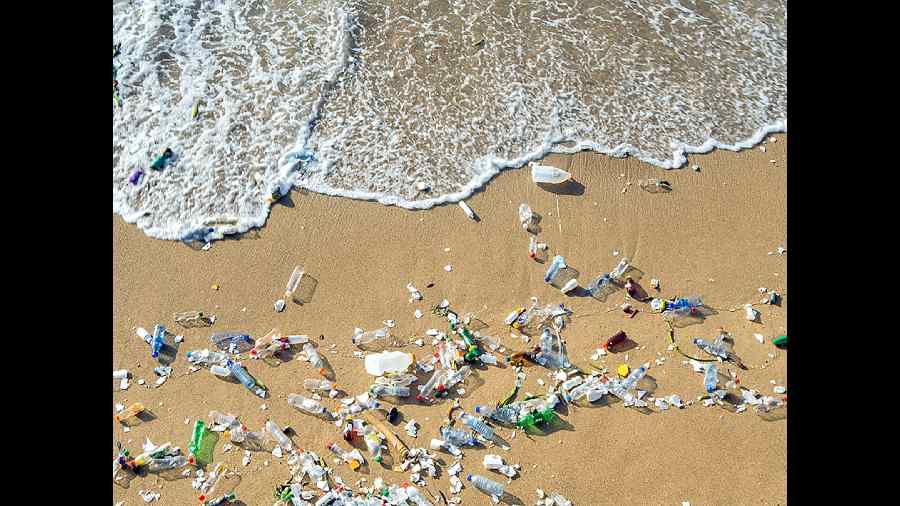The image advisers of Narendra Modi have packaged him so well that no truth can stick to him. Products are protected and preserved by packaging. But they will still have social and environmental costs.
Let us leave the prime minister and look at the packaging of waste. In most countries, the standard of waste management is dependent on the area’s socio-economic status. Lutyens’ Delhi and Vasant Vihar are exceptionally clean. But waste management is yet to be seen through the lens of a right to health or to a clean environment for all. Instead, it is seen as a service to be provided to a few.
Even though public services to the ‘bottom of the pyramid’ remain abysmal, this socio-economic rung has become a major market. Businesses cater to it by producing cheaper products and packaging smaller quantities of expensive products to make them affordable. What was conceived by C.K. Prahalad in his book, The Fortune at the Bottom of the Pyramid, and implemented by Hindustan Unilever has become a major vertical globally for businesses ranging from FMCGs to mobile phones. The result is a form of ‘consumption-equality’. People can purchase products that were once unaffordable. However, does it really mean they are better off? This kind of phantom socio-economic set-up does not suggest higher pay or greater access to public services. But it has resulted in more waste being produced.
The Global Alliance for Incinerator Alternatives released a report on sachet waste. According to the findings, the Philippines consumes 59.7 billion sachets annually. In a Harvard Business Review article, Vijay Mahajan states that HUL sells 27 billion sachets a year. This is just one company. Now multiply this by the plethora of FMCG and F&B firms and you will get the scale of the crisis. Sachets have inveigled themselves into upper-socioeconomic spheres too. A pizza or a burger is seldom delivered without sachets of sauces, herbs and spices. The Indian railways serves food with a sachet of pickle. A food order thus results in plastic, cardboard and aluminium foil waste.
What is unfathomable is the following: businesses conduct due diligence before entering a market, launching a product, or providing a service. Where does the environment fit in this risk-analysis model? It is inconceivable that companies are ignorant about the consequences of the use of sachets and other forms of packaging.
The question as to whether companies recognise the ‘bottom of the pyramid’ as an untapped market or as an opportunity to improve lives can be settled in another way. Businesses have developed various schemes to make inroads into these markets and, in the process, have created jobs. This is the story which businesses propagate. However, if the idea were to improve lives, wouldn’t they consider the lifecycle of all aspects of the product — including packaging? Companies take the high road when cornered on the issue of waste. Arguments of ‘providing work’ and ‘improving nutrition and hygiene’ are bandied about to neutralise the criticism of their business model. Businesses are in the market to make profit. In the early industrial age, industries were not concerned with pollution or workers’ rights because of the absence of public pressure regarding these issues. Today, the right to make profit cannot imply ignoring one’s responsibility towards the environment.
The rise in packaging waste is not only an indicator of increasing markets and growing consumption but also of corporations latching on to low-hanging fruit.
(Samir Nazareth is the author of 1400 Bananas, 76 Towns and 1 Million People)











